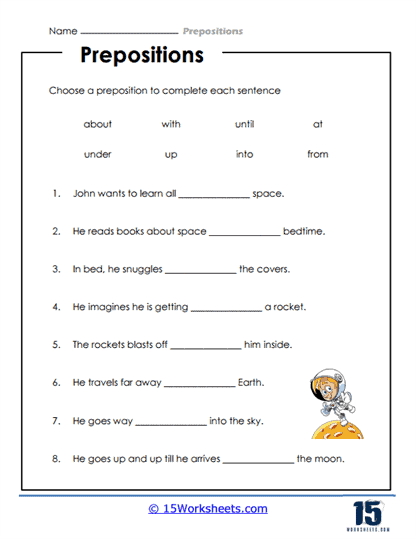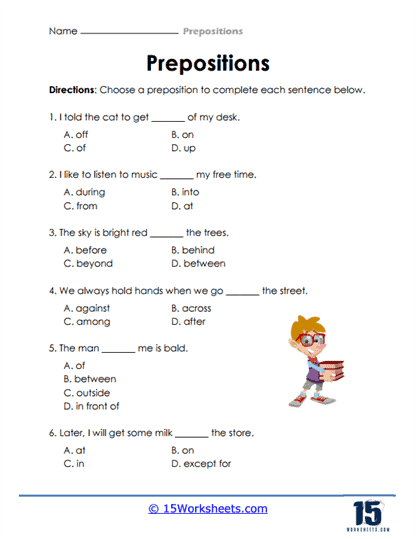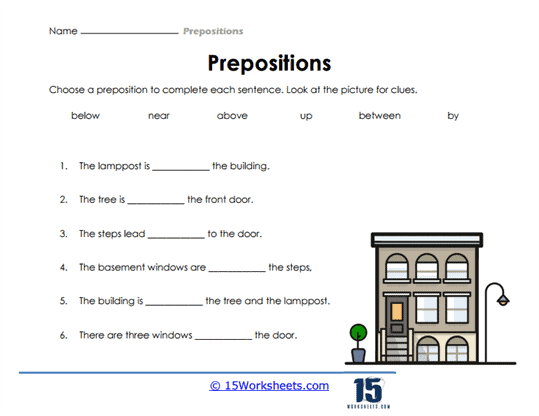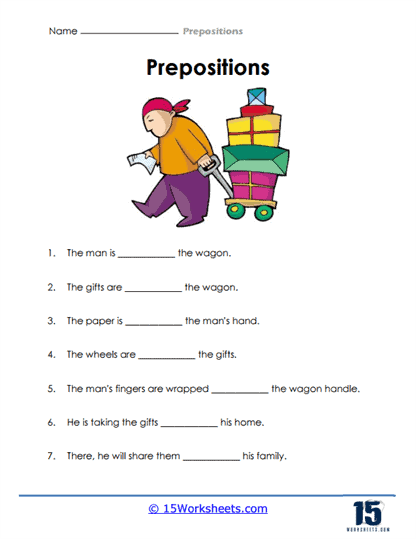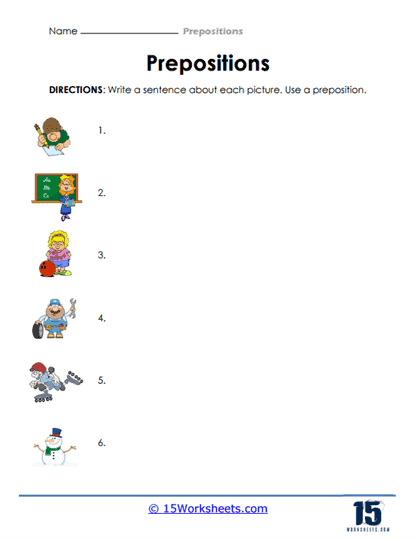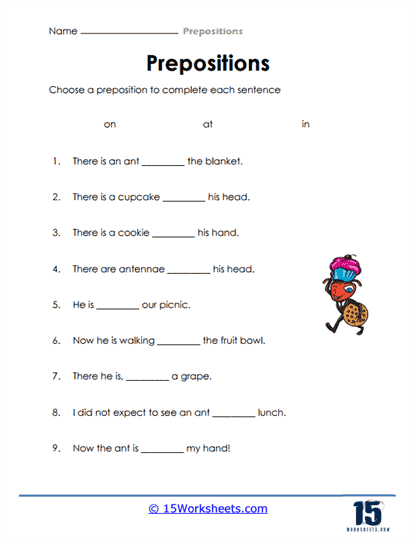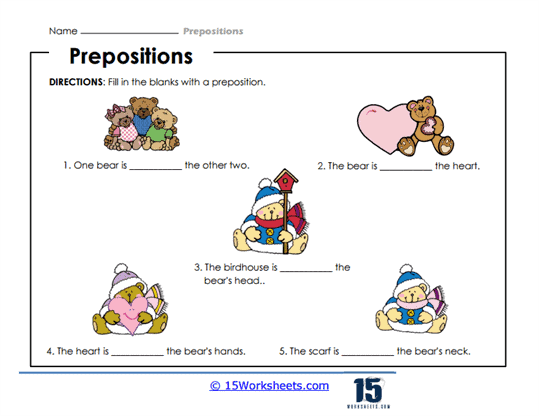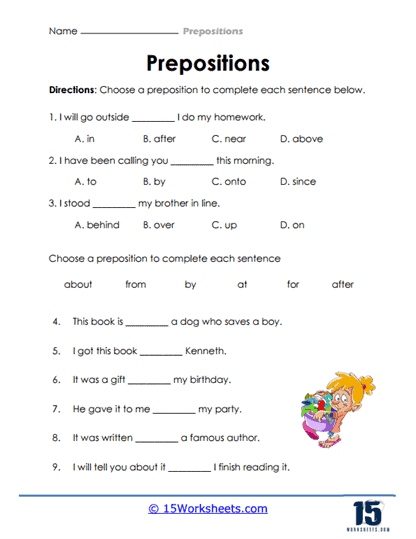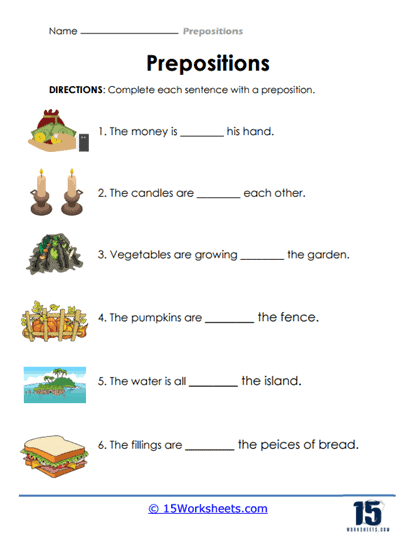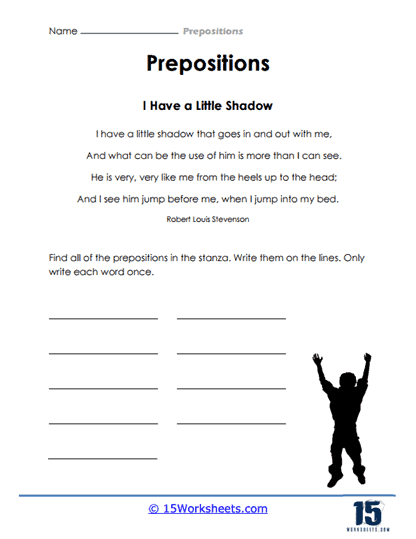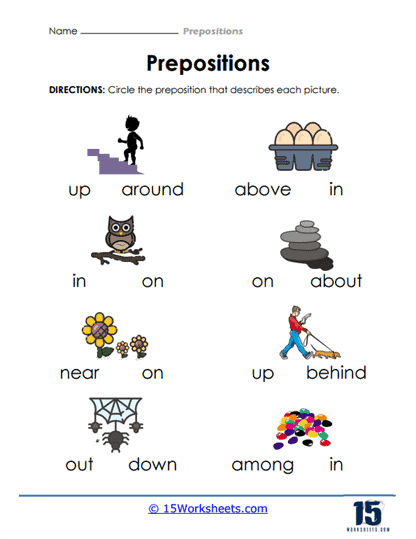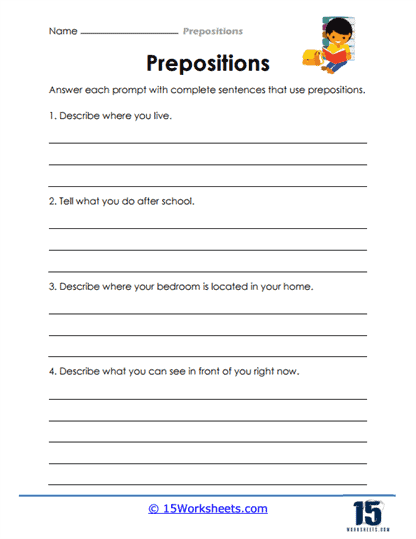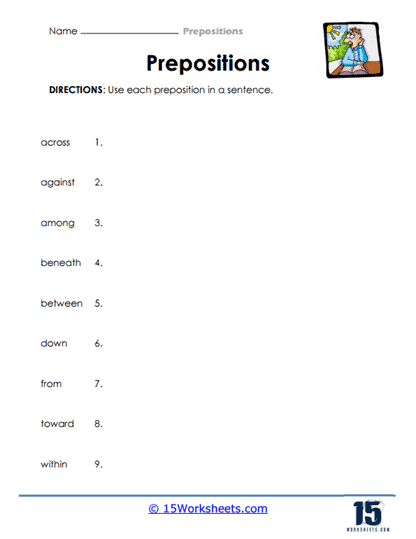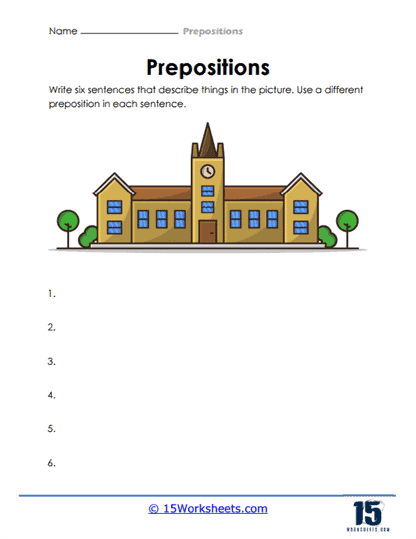Prepositions Worksheets
All About These 15 Worksheets
These prepositions worksheets are a valuable resource for teaching and reinforcing this important aspect of English grammar. A preposition is a word that shows the relationship between a noun or pronoun and another word in a sentence.
These worksheets include examples and exercises to help students identify prepositions in sentences and understand their functions. They also include activities such as filling in the blanks with the correct preposition, using prepositions to indicate location, time, or direction, and other short writing prompts. Through these worksheets, students will:
- Be familiar with various prepositions and how they are used in sentences;
- Complete sentences by supplying the correct preposition;
- Write their own sentences using different prepositions;
- And answer short writing prompts that demonstrate mastery on their knowledge with prepositions and their function.
By completing these worksheets, students can develop a better understanding of how prepositions work and how they can be used to add detail and specificity to sentences. This can help them improve their writing and communication skills, as well as their reading comprehension.
Types of Prepositions
A preposition is a term that shows how a noun fits into the context of the sentence’s other components. They describe the logical connections between the remainder of the phrase and the sentence’s object in terms of the order, space, and relationships. They aid in our comprehension of locations, temporal relationships, and order.
Prepositions highlight the relationship between two sentence components. Sentences without prepositions would just have nouns and verbs without any indications as to where they’re located. Prepositions can be used to specify a noun’s location, timing, slant, or relationship to a concept.
Although there are numerous prepositions in English, your statement could require a more complicated one. Prepositional phrases, participle prepositions, double prepositions, and compound prepositions can all be useful in this situation.
Prepositions of Direction
This sort of preposition is typically used in response to the question, “Where?” You may find out where something is heading using a preposition of direction. They serve as a moving object’s direction indicator. Common examples include along, under, toward, above, and between.
Prepositions of Place
This kind of preposition is used by writers to define a location. There are four different place prepositions. At designates a particular location in space. “In” refers to a confined area. With respect to a surface, an item is said to be “on.” “By” indicates how close something is to another object. Some common examples of prepositions of a place include, in, at, by, and on.
Prepositions of Time
On, from, to, after, until, and during are all common examples of prepositions that are used to describe time in a sentence.
Prepositions that are used to denote time indicate when an event happens, when it happened or when it will take place in the future.
Prepositions of Movement
Prepositions of movement are used as indicators of a destination or direction to which someone or an object is moving. In short, these prepositions are used to show any movement from point A to point B, and the propositions of movement are always used along with verbs of motion. One of the common prepositions of movement is, of course, to.
The preposition ‘to’ is used to determine a place whenever you want to express the endpoint of a movement or journey within the said context. Towards is a preposition that is used to emphasize the direction or the nature of movement. In this instance, the place could or could not be the endpoint. Of course, the preposition ‘into’ is always used to convey that a particular movement has ended within something.
Compound Prepositions
Prepositions prefixed to a noun, an adjective, or an adverb are compound prepositions. Among, above, along, across, about, beneath, alongside, between, beyond, outside, inside, and without are a few examples of compound prepositions.
Prepositions are necessary for sentences to make sense. In essence, they show how the noun is related to the other words in the phrase. They demonstrate the connections between the item and the rest of the phrase in terms of time, place, and logic. They aid in our comprehension of the position, relationships, time, and order. To connect a noun or pronoun to another word in the phrase, we employ a preposition.


